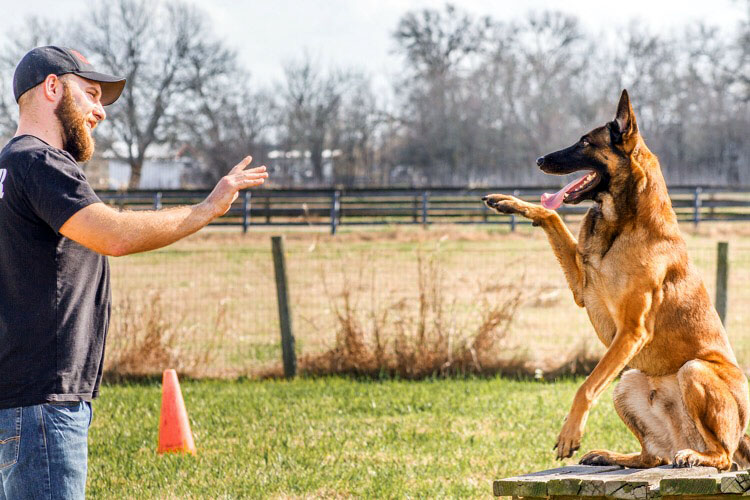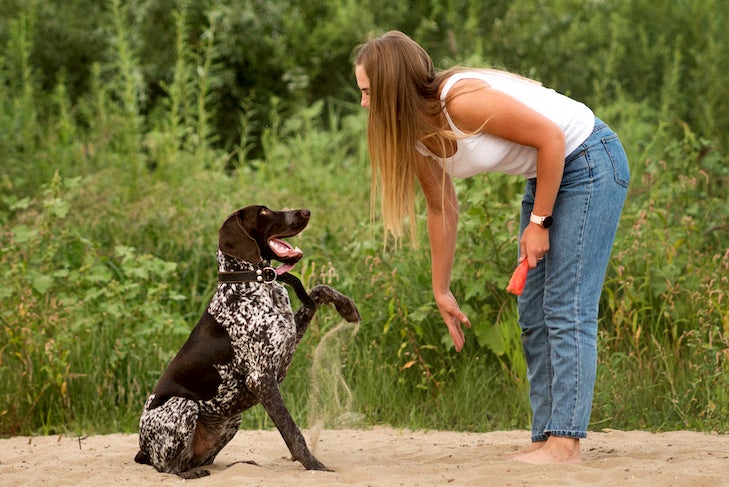Effective Dog training strategies for well-behaved dogs.
Effective Dog training strategies for well-behaved dogs.
Blog Article
Master Important Commands: Efficient Canine Training Made Easy
Efficient pet dog training is a fundamental aspect of responsible animal ownership, and mastering vital commands acts as the structure for an unified connection between trainer and pet. Commands such as "Sit," "Keep," and "Come" not only help with communication but also advertise a more secure setting. Employing positive reinforcement strategies can improve the learning experience, yet many encounter challenges in achieving regular outcomes. Comprehending the nuances of canine actions and the training process is essential; nevertheless, the trip to a trained canine frequently presents unforeseen difficulties that need attention. What techniques can genuinely change these obstacles right into opportunities for development?
Understanding Your Pet dog's Actions
To understand the subtleties of efficient dog training, it is important to break down and examine your dog's habits. Dog training. Recognizing the motivations behind your pet's actions is vital; behaviors can come from impulse, fear, enjoyment, or a desire for focus. By observing your pet in various circumstances, you can recognize patterns that might indicate underlying emotions or demands
As an example, a canine that barks excessively might be expressing monotony, stress and anxiety, or a demand for social interaction. On the other hand, a pet dog that shows destructive habits could be looking for stimulation or relief from anxiety. Identifying these triggers allows you to tailor your training technique properly.
Additionally, it is important to think about the pet dog's breed attributes, as they can affect actions significantly. Some breeds are predisposed to certain qualities, such as herding or safeguarding reactions, which can influence their responses to specific stimulations.
Lastly, consistency in your responses to your dog's actions cultivates a far better understanding between you and your pet. This mutual understanding is fundamental for constructing depend on and promoting a reliable training procedure that supports both behavior modification and favorable reinforcement.
Essential Commands to Educate
Teaching essential commands is a basic facet of efficient canine training, providing the structure for a mannerly and receptive family pet. These commands not just enhance interaction between the owner and the canine however also guarantee security in different atmospheres.
The most important commands consist of "Sit," which urges your dog to remain fixed and tranquil; "Remain," which enhances the idea of staying in one place till released; and "Come," which is vital for recalling your canine from possibly dangerous situations. "Down" teaches canines to relax, promoting relaxation and control, while "Leave it" aids avoid pets from choosing up hazardous or unwanted things.
" Heel" is one more vital command that urges your pet to stroll closely close to you, improving chain manners. Last but not least, "No" works as an important boundary-setting command, helping to deal with unfavorable behaviors.
Training Techniques for Success
Effective pet dog training counts greatly on utilizing a selection of strategies that accommodate both the pet dog's learning style and the proprietor's web training goals. One crucial method is favorable reinforcement, which involves satisfying desired actions with deals with, appreciation, or play. This technique urges the dog to duplicate those behaviors, promoting a strong bond between owner and pet dog.

Another reliable method is remote control training, where a distinct noise, made by a remote control, notes the precise moment a pet carries out a preferred activity. This precise timing aids dogs link the actions with the incentive, boosting their understanding.
Consistency is crucial in all training methods. Developing clear commands and keeping the exact same signs aids the pet dog grasp expectations extra quickly. Additionally, brief, appealing training sessions stop monotony and rise retention.
Integrating socializing opportunities is likewise crucial. Exposing pets to different environments, individuals, and various other pets assists them establish confidence and flexibility.
Lastly, persistence plays a considerable role in effective training - Dog training. Each pet finds out at their own rate, and recognizing this can cause an extra satisfying training experience for both the proprietor and the canine. Implementing these methods will establish the structure for efficient pet training
Typical Obstacles and Solutions
In spite of the best training techniques, pet dog owners frequently encounter typical difficulties that can impede development. When family members utilize different commands for the exact same actions, it confuses the pet, leading to irregular feedbacks.

In addition, some pets might show stubbornness or lack motivation. This can websites usually be resolved by including positive reinforcement strategies, such as treats or praise, to encourage wanted habits. Tailoring benefits to what your pet locates most motivating can substantially boost their interaction.
Finally, worry or stress and anxiety can impede progression in training. Recognizing indications of stress and anxiety and changing the training speed appropriately is crucial. Utilizing progressive direct exposure to been afraid stimuli can aid construct self-confidence in time, helping with a much more efficient training experience.
Keeping Consistency and Perseverance
Consistency and perseverance are critical in pet training, as they form the foundation for achieving long-term behavior modifications. Pets grow on routine and clear assumptions; hence, keeping a consistent approach in commands, incentives, and corrections is necessary. When instructors make use of the very same signs and signals accurately, canines are much better able to comprehend what is being asked of them. Inconsistency can lead to confusion and aggravation, weakening the training process.
Similarly essential is the function of patience. Training a dog is not a rapid procedure; it calls for time and rep. Canines, much like humans, have varying learning paces and may not understand commands immediately. Instructors have to identify this and stay tranquil, offering encouragement instead than stress. Positive support plays a crucial function right here, rewarding preferred actions and helping to promote a relying on connection between the dog and trainer.
Verdict
Grasping important commands is fundamental to effective pet dog training, cultivating enhanced communication and enhancing positive actions. The application of favorable reinforcement methods, paired with consistency and persistence, significantly boosts visit here the training experience for both the pet dog and trainer. Addressing usual challenges with sensible solutions better sustains the training procedure. Eventually, a trained pet not only shows etiquette but likewise establishes confidence, adding to a harmonious partnership in between the pet dog and its owner.
Report this page